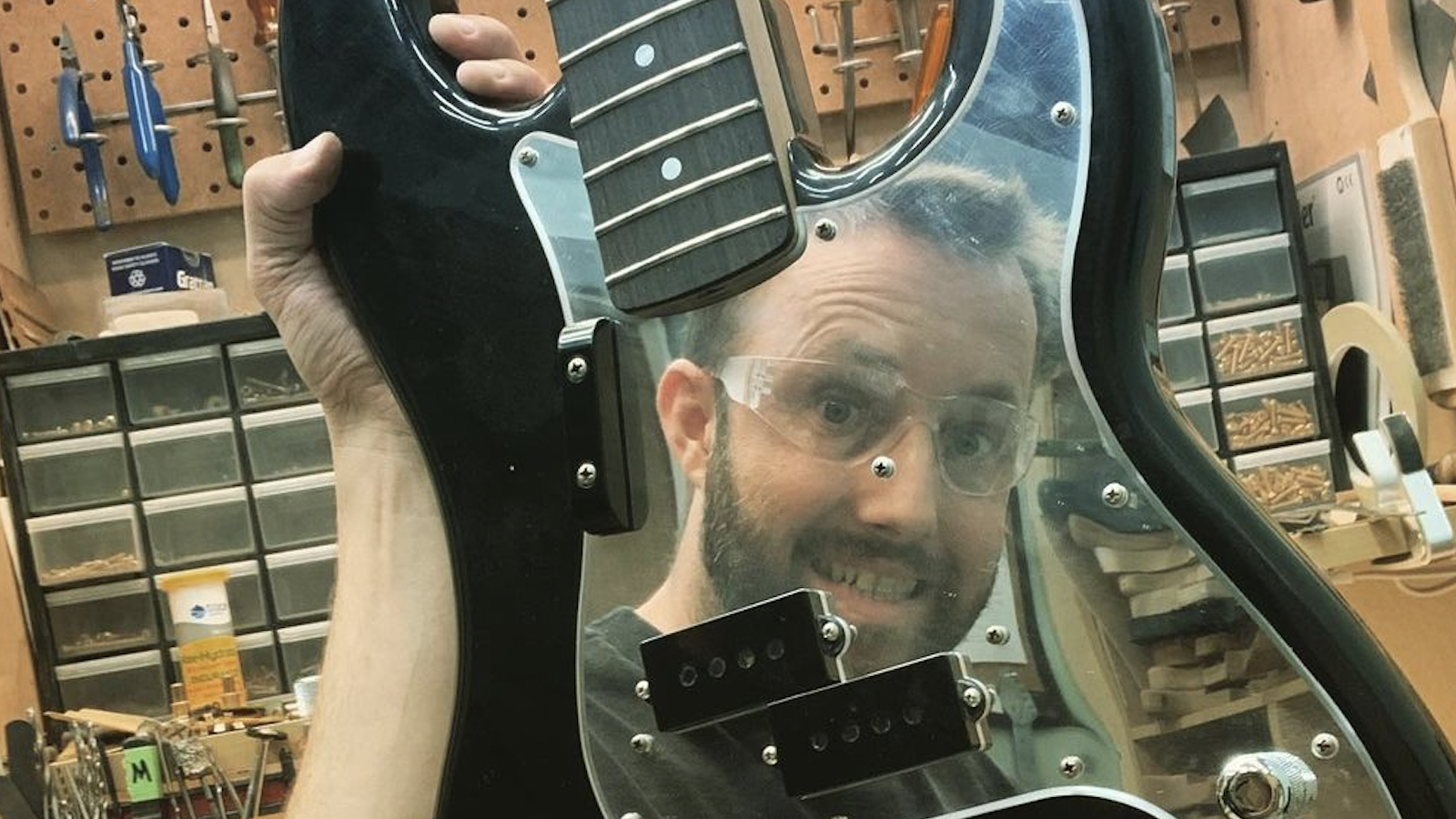An interview with Fender Custom Shop Master Builder Kyle McMillin
Australian Guitar gets down to the wire with a renowned Custom Shop artisan to learn all about his latest psychedelic work of art

For any guitarist worth their callouses, by and far, the most important thing is how an axe plays – some of the world best licks and most soaring solos were hashed out on kit that, had it not been in the hands of riff royalty, you’d assume was plucked from a dumpster. That being said, you have to admit, there’s something pretty damn special about the moment when you look a guitar and simply think, “Wow.”
Such is the crux of Fender’s annual Prestige Collection, where the Master Builders that occupy the Californian giant’s Custom Shop – legendary luthiers with artistic vision only rivalled by their handiwork in caliber – get an unrestricted opportunity let their imaginations run wild. Highlighting the team’s idiosyncratic creativity and craftsmanship, the Prestige Collection has – over almost a decade of delivering timeless, one-of-a-kind masterpieces in boutique lutherie – earned the Fender Custom Shop its nickname of ‘the Dream Factory’.
Standing out amongst the 2021 slate is Kyle McMillin’s trippy Stratocaster, which alongside gold hardware and tortoise shell plating, a beautiful African blackwood fingerboard and Curtis Novak’s bespoke GTX humbuckers, stands out with its bookmatched top blending burled redwood and opalescent blue-green resin. Drawing inspiration primarily from boutique furniture, McMillin’s Strat is easily the classiest looking axe of the bunch.
If you’d like to get your hands on one… Well, you can’t. Sorry. Like all of the pieces in Fender’s Prestige Collection, McMillin’s Strat was painstakingly handcrafted as a truly unique work of art – and it was snapped up in record time by the UK’s Guitar Guitar shop. But you can still admire the beauty and badass-ness of this scintillating Strat, and learn a little about how it came to life in our one-on-one interview with McMillin himself…
Where did the idea for this guitar come from?
I got the idea and the inspiration from Instagram. I’m always digging through Instagram for new ideas – something different to what you would typically see every day – and I kept coming across these pieces of furniture and these art pieces that people would put on their counters or walls or whatnot, just for show. One of the things I saw was someone who’d taken this rustic piece of wood from the edge of a tree, with the bark on the side, they had it flat-sawn on the table and put a bunch of blue epoxy resin over it, layered it with different shades, and then put some white down and took a heat gun to it to make it look like natural waves.
When Fender came to you and said, “There are no limits to what you can do with this guitar,” did your mind just start racing with all the possibilities you could explore?
Yeah. We get the opportunity to do stuff like this every year, so year ‘round I’m always trying to think of something we can do [for the Prestige Series]. Sometimes the challenge is outdoing yourself – every time I do a guitar like this, I’m like, “Wow, how am I going to beat this?” Last year was my Winery Vineyard Tele, and that was just really nice… I wish I could keep these guitars, y’know? They’re really nuts, and they sound great… The hardest part is definitely letting go.
So what drew you to burled redwood for this year’s Stratocaster?
Well, I didn’t necessarily pick the wood out for tone. We acquired some thin body tops that weren’t glued together yet – they were about three eights of an inch thick – and we got them from someone at the NAMM show. They happened to be burled redwood, and we happened to have some bluish-green resin on hand, and they seemed a really good fit together. I wasn’t able to pour the resin myself due to a lack of time, but I do want to start pouring it myself in the future, and have full creativity of how it’s going to look; maybe utilise some other techniques with it that aren’t in this one, kind of step it up a little bit.
All the latest guitar news, interviews, lessons, reviews, deals and more, direct to your inbox!
How does it sound?
Oh, it sounds great! I was just playing it before I came in here [laughs]. It’s really cool, yeah.
How many revisions will a project’s concept go through? Is the finished Strat very close to what you had envisioned?
I think so. It’s kind of hard to remember because I work on these guitars year-round. I probably was thinking about this a year and a half ago, so it’s pretty hard to remember all the details. But they’re never 100 percent what I first imagine – sometimes I get some more inspiration as I go, or I’ll see something and be like, “Oh, I obviously need to add that!” Like the pickups that were in it – that wasn’t in my original plan, but I had seen the open-cover pickups that Curtis Novak did and I thought, “Y’know let me give him a call and see what we could do.” And we came up with something that complimented the burled redwood and the resin.
Do you follow the same sort of creation process for each guitar you build?
It varies between each guitar. It always starts off in your brain, thinking up ideas, and then the approach and the process differ with every project.
Do you have a favourite part of the process?
Yeah, it’s a toss-up between the design and the actual woodwork. When I first got into guitars, I’d get a roll of parchment paper from the grocery store and I would draw two separate sketches – one would be the centreline, looking straight at the guitar, and the other would be the guitar string, and I’d just kind of engineer it from the string down, then from the front view – and I always had fun doing that. Now, many years into this, I do it all on cat programs, and that’s fun – that’s the part I like the most.
So what’s next for you?
Oh, I’ve got all kinds of ideas! It’s hard to figure out which one I’m going to pull out next; there’s one idea I’ve had in my head for well over a year, and I’m trying to figure out how to accomplish it… Maybe that’ll be the next Prestige, but for now it’s a secret.

Ellie Robinson is an Australian writer, editor and dog enthusiast with a keen ear for pop-rock and a keen tongue for actual Pop Rocks. Her bylines include music rag staples like NME, BLUNT, Mixdown and, of course, Australian Guitar (where she also serves as Editor-at-Large), but also less expected fare like TV Soap and Snowboarding Australia. Her go-to guitar is a Fender Player Tele, which, controversially, she only picked up after she'd joined the team at Australian Guitar. Before then, Ellie was a keyboardist – thankfully, the AG crew helped her see the light…
